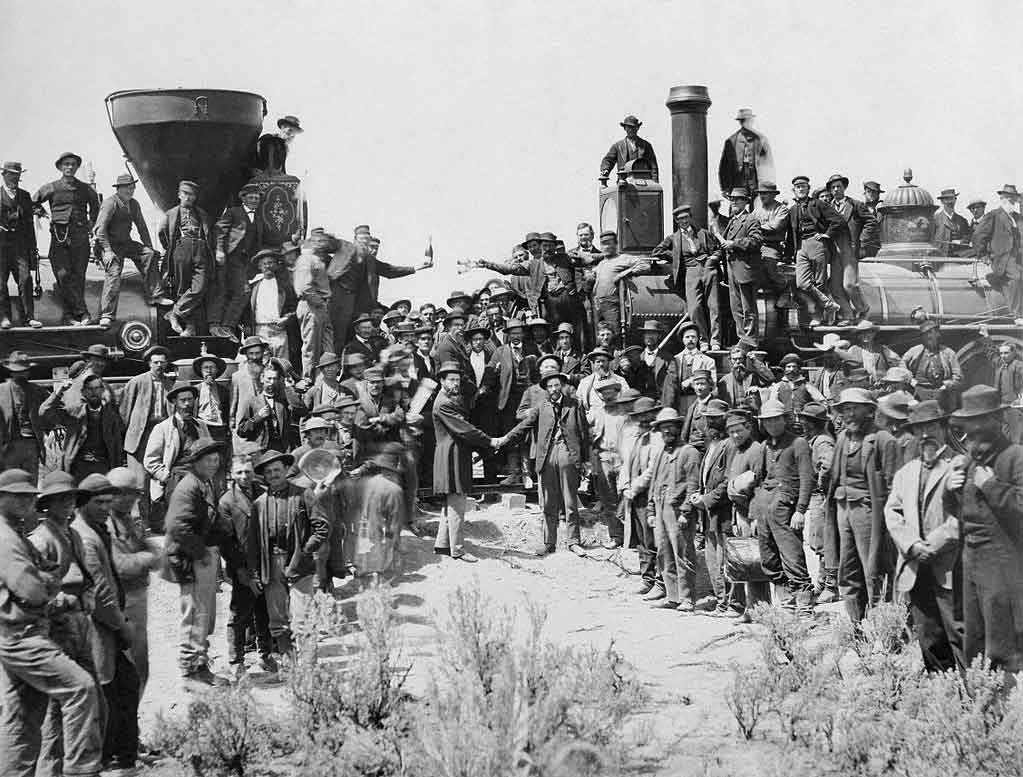Trancontinental Railroad Complteted

On May 10th,1869 at Promontory Point, Utah, a golden rail spike was struck, completing the first transcontinental railroad line. The spike joined the lines of the Union-Pacific Railroad being built westward; from Omaha, Nebraska and those of the Central-Pacific being built eastward; from Sacramento, California.
In 1862, the Central-Pacific Railroad won the right to build tracks east from San Francisco. At the same time, the Union-Pacific Railroad received the right to build tracks West of Omaha. As an incentive to build, the government offered railroad companies 20 square miles of land in the states through which they built, and 40 square miles in territories, for every mile of completed track.
The Central-Pacific Railroad used mostly Chinese laborers to build its right of way, while the Union-Pacific Railroad used mostly Irish laborers.
At the point when the east and west railways were joined, the Central-Pacific had built 1,086 miles of track and the Union-Pacific, with more difficult terrain to build through, had built 690 miles of track.
With the joining of these two lines, the trip from San Francisco to New York was cut from two months to eight days.
 >
>